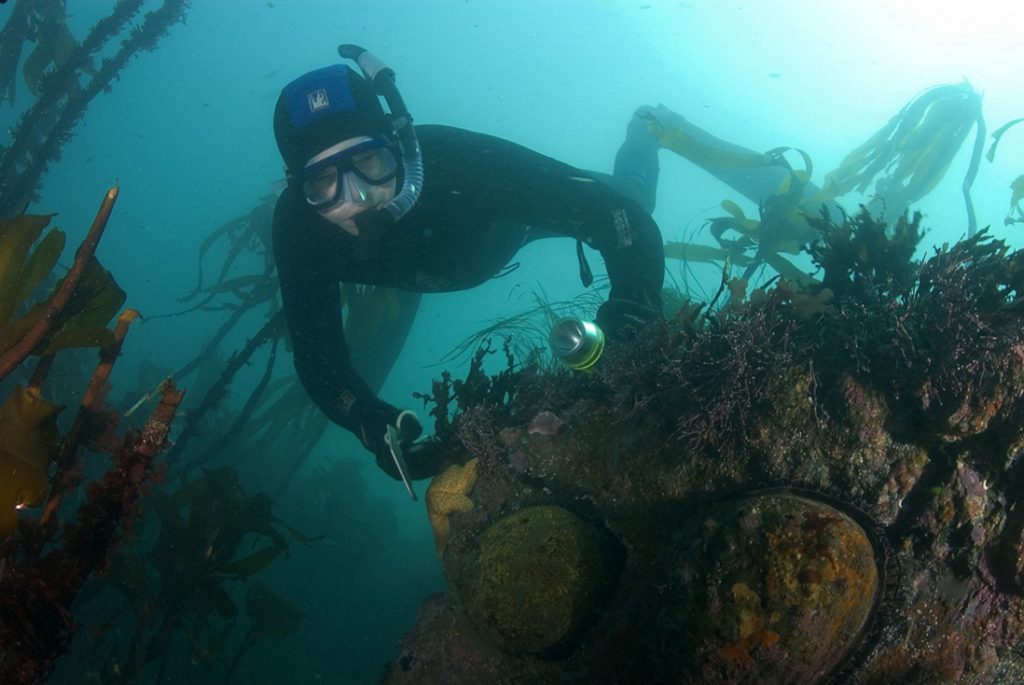By Tom Roth, Redwood Chapter Conservation Chair
The state Fish and Game Commission shut down the last abalone fishery in California for the 2018 season, the result of a collapse of the North Coast’s once vibrant kelp forest ecosystem. Red abalone, which have a range from the Golden Gate to northern counties but are mainly found in the coastal waters of Sonoma and Mendocino counties, are facing rapid depletion due to a catastrophic chain of events which may be tied to global warming.
Redwood Chapter urged the commission to close the fishery, rather than enact less drastic measures, such as shortening the season or setting smaller catch limits, due to the seriousness of the situation. The commission concluded that closure would offer the greatest protection for the species, which are sick and dying from starvation due to the loss of their main food, bull kelp. The commission’s decision was made harder since the abalone are a favorite of recreational divers, and a $28 million coastal economy is dependent on them.
Marine scientists, such as California Department of Fish and Wildlife’s Dr. Cynthia Catton, believe the imperilment of red abalone populations can be traced back to 2013, when warming waters induced a viral outbreak (sea star wasting disease) affecting at least 19 species of sea stars, liquefying their bulbous bodies and numerous arms. Sea stars, despite their children’s book looks, are voracious predator of urchins. With its main predator gone, sea urchin populations grew geometrically.
Unusual climatic conditions added to the problem in 2015, when upwelling of nutrient-rich cold water ceased, causing entire kelp forests to die and severe winter storms swept the uprooted kelp onto beaches. Purple urchins, which feed on kelp though can survive several years without eating, have taken command of the diminished kelp ecosystem, devouring any new shoots that spring up and creating what scientists call urchin barrens: bare seabeds where abalone and other kelp-dependent species starve. Kelp forests can come back, but it takes years and would probably require the recovery of sea star populations and reductions of purple sea urchins through predation and/or disease.
Kelp forests can rebound, but it takes years and would probably require the recovery of sea star populations and reductions of sea urchins through predation and/or disease.
